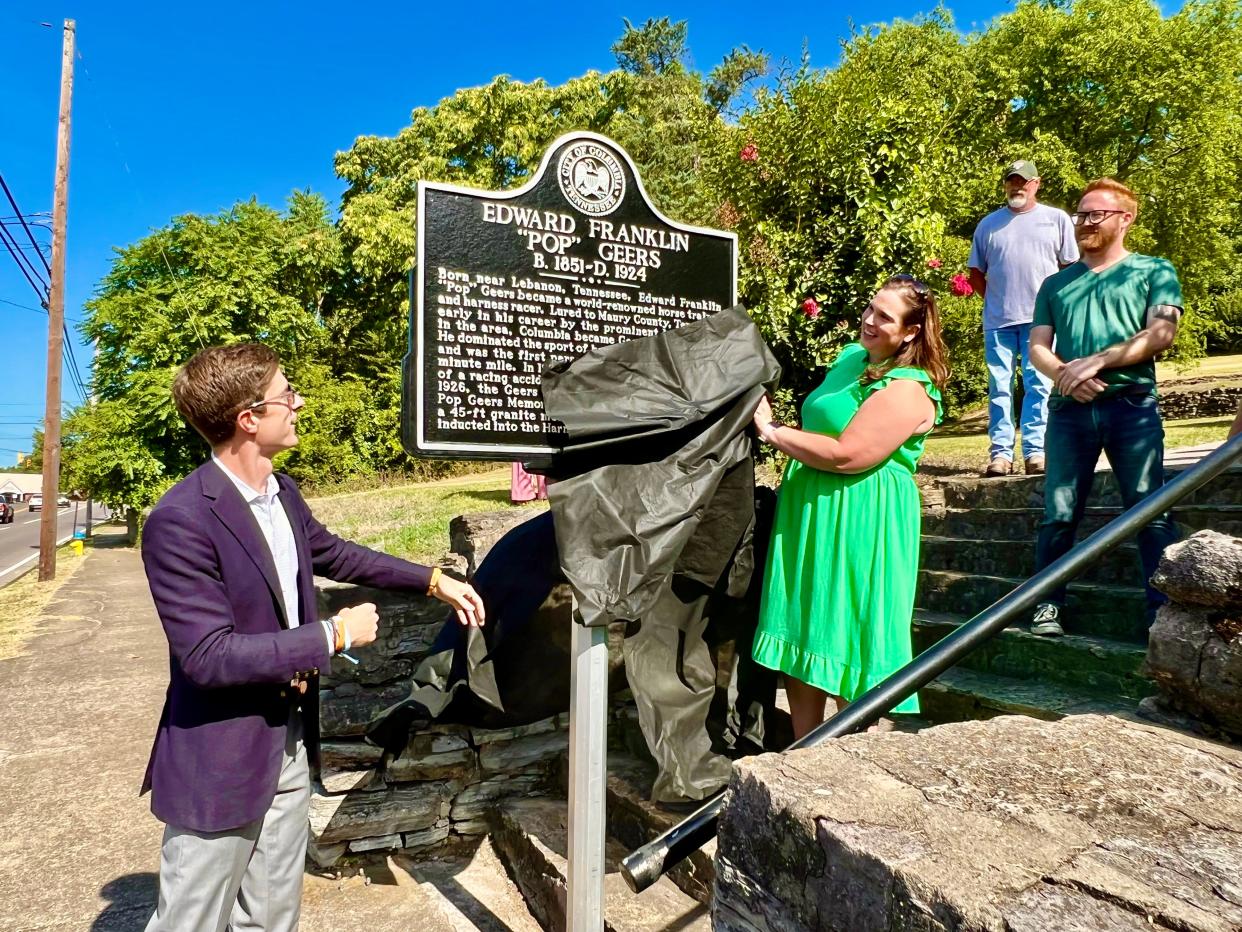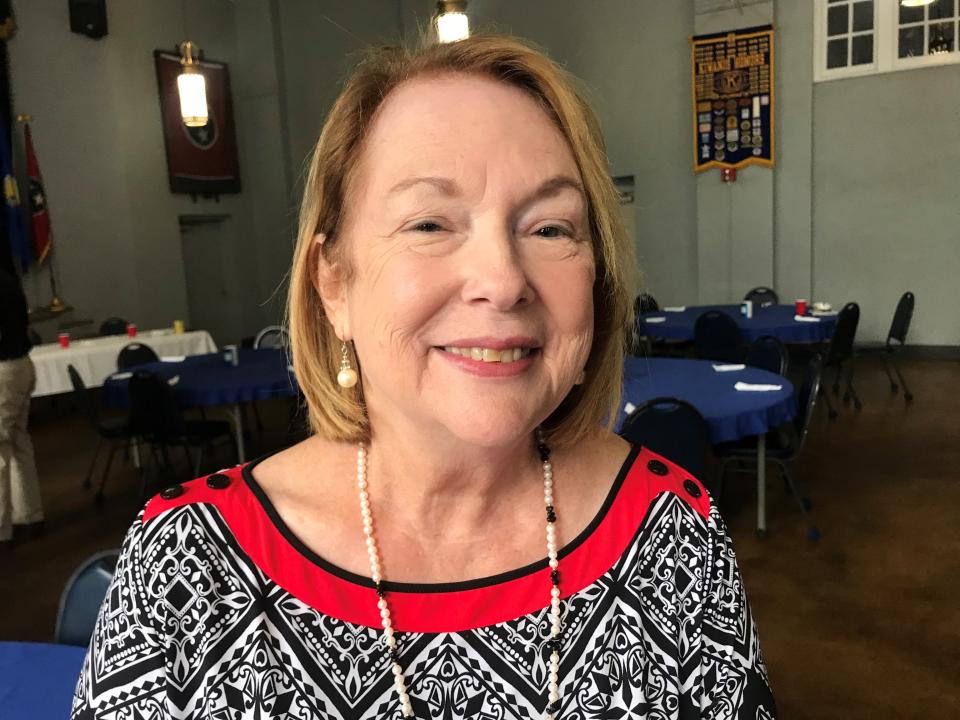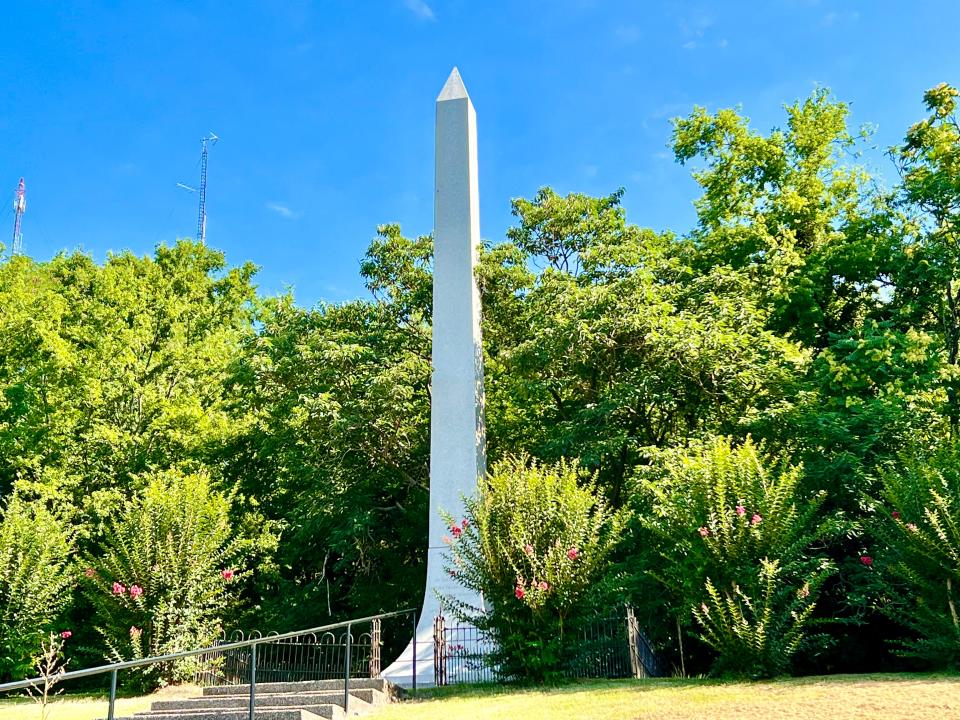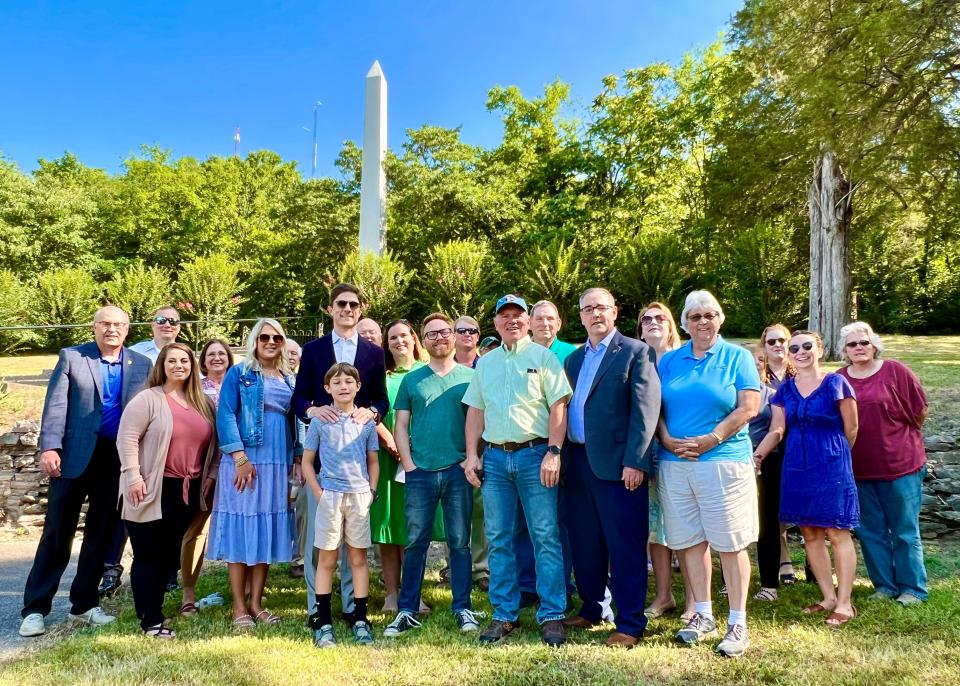Sheila Hickman: About Edward Franklin (Pop) Geers, Columbia harness racer
- Oops!Something went wrong.Please try again later.

On Thursday, historians and dignitaries stood in the small park on West Seventh to dedicate a new City of Columbia historical marker to Pop Geers. The park has been there since October 10, 1926, and stands as a tribute to the famous man of harness racing, Pop Geers (pronounced Jeers).
The development of horse racing and harness racing parallel the founding of our country. Horses were on the ships when the colonists arrived. In 1774, the Continental Congress outlawed horse racing. In 1788, the famous horse, Messenger, arrived from England. From his bloodlines came the famous trotting and pacing horses of America.
Harness racing was the first commercial sport and the first number one spectator sport in this country. (Baseball would come after the Civil War.) Some states feared the evils of gambling and closed the race tracks. Since the race tracks were closed, harness racing became very popular. A fast horse behind a sulky, a two wheeled apparatus with the driver sitting directly behind the horse, was a glorious sight. Eventually, the bicycle sulky was refitted with smaller wheels.

Geers was born in Lebanon, Tennessee, on January 25, 1851, and his parents thought he would become a storekeeper like his father. As a young boy he hitched two calves’ tails together to see if he could drive them. One calf lost his tail, but they recovered and became fine oxen. He traded the oxen to his father, and for $50 he bought a two year old colt.
In 1868, Geers bought a trotting mare, trained her, and sold her for $250. Then he bought the butcher’s horse because “he showed some speed at the trot.” The plain looking horse cost $125, and Geers bought a sulky for $15. With such simple beginnings, Geers considered himself ready to compete.
His problem was that there were no tracks for practicing.
Geers decided to create his own track which was one-third of a mile long. Still a student, Geers found little time to practice. He discovered that the best place to reach a certain gait was on public roads. Geers continued training, and the horse trotted a mile in 2:50. The horse sold for $400, and more importantly men noticed his training style and wanted Geers to train their horses.
The hallmark of Geers training technique was gentleness. Throughout his career no one ever recalled his taking a whip or saying a foul word to his horses. Some called him the silent man of the turf. As a trainer and breaker of horses, Geers stressed keeping his charges healthy. One story about Geers, which may be true, is that King, who was trained by Pop, carried one ear back in case Pop said something the horse needed to hear.
Marker placed: Historic marker at Pop Geers park honors 'celebrity' harness racer
A black cap and jacket with no adornment was Geers’ usual racing attire. One time he wore “a coat of many colors,” and the horses would not let him in their stalls. Geers was known to sing to his horses, “Oh you girl, or Oh you boy.”
Another Geers’ story is that he was offered $2,500 by a syndicate to throw a race. It seems that the group had bet all their money on one of his competitors. Since Geers had won the first two heats, the group would go broke if their horse lost. Geers emphatically refused because he had promised his mother never to steal or tell a falsehood.
Maury County breeders were famous for their Standardbred horses that are used for harness racing. Geers recognized the quality of the horses and proximity of race tracks and made Columbia his home. From here Pop went all over the United States training horses and competing in harness racing. With his great success Pop earned over one million dollars during his career.

Geers trained and raced many famous horses including Maury County’s Hal Pointer. The rivalry between Hal and Direct continued in Terra Haute, Nashville, and Columbia. Direct won, and many Columbians lost money that day. Once he raced a triplicate team with a four wheeled sulky and set a record of 2:14. He raced a double team and recorded a time of 2:12 ¼.
In 1916, Geers drove another famous Maury County horse, Napoleon Direct, to a record time of 1:59 ¾. Over Napoleon Direct’s career he won $25,000.
In 1924 on August 24th, Geers raced in South Bend, Indiana with Peter Manning who ran a half-mile in 2:02 ½. On September 3rd, in Wheeling, West Virginia, Pop was injured on the race track during the second heat driving Miladi Guy.

My daughter, Sarah Elizabeth Hickman-McLeod, has been researching Geers since 2005 for her Master’s thesis and upcoming book. She was introduced to Geers by the late Bob Duncan, Maury County historian. In Goshen, New York, there is a famous race track and the Harness Racing Museum & Hall of Fame. Sarah Elizabeth and I have been fortunate to do research there twice.
The amazing items and publications in their collection is a rich source of information. Among their treasures are many bound volumes of magazines containing articles and photos about Maury County breeders and horses. Also in the collection is Geers’ racing suit, his harness racing driver’s license and many photographs.
When we visited one July, the harness racers and owners celebrated their hall of fame inductees. The next morning everyone was in the stands at the famous race track waiting for the opening race hoping to win some money.
This article originally appeared on The Daily Herald: Sheila Hickman: About Edward Franklin (Pop) Geers, harness racer

